Word Of The Day: Philodox
Word of the Day: philodox
n. A person who loves or vehemently propounds his or her own opinions; a dogmatic or argumentative person

Image: “Savonarola Preaching Against Prodigality” by Ludwig von Langenmantel. Public Domain via Wikimedia Commons
More Posts from Philosophical-amoeba and Others







Fuji-Ya Restaurant, Second to None
In 1968, Reiko Weston opened her new Fuji-Ya restaurant built atop the limestone foundation of a 19th-century flour mill overlooking the Mississippi River and the Stone Arch Bridge. The original Fuji-Ya restaurant operated near 8th St. and LaSalle beginning almost a decade earlier, in 1959, and served fine Japanese food including Charcoal-Broiled Teri-Yaki dinners, seafood dishes, soups, rice plates, and more. Fuji-Ya translates to “second to none” and the new restaurant offered a dining experience like no other in the Twin Cities.
Weston’s restaurant business expanded over the years with Taiga, a Chinese Szechwan restaurant in St. Anthony Main, and The Fuji International in Cedar-Riverside neighborhood, which featured Korean, Chinese, and East Indian food in addition to Japanese food. Her restaurants received numerous awards and Weston herself was named Minnesota Small Business Person of the Year in 1979.
After Reiko Weston passed away in 1988, her daughter Carol stepped in to manage. But in 1990, the City of Minneapolis bought out the historic restaurant in order to make way for the newly designed parkway. About a decade later, Fuji Ya was brought to life again in Uptown in the trendy Lyn-Lake area, where it remains today.
Recently, Fuji-Ya has gained renewed attention as the Park Board makes plans for a $12 million riverfront refresh. Plans include the teardown of the old Fuji-Ya building, expansion of green space, improved pedestrian crossings, and the addition of a new riverfront restaurant. It was announced last week that Sioux Chef owners Sean Sherman and Dana Thompson will open Owamni: An Indigenous Kitchen on the site.
Menu from the original Fuji-Ya restaurant at 814 LaSalle Ave. from the Minneapolis History Collection Menu Collection. Photos from the Star Tribune Photograph Collection at the James K. Hosmer Special Collections, Hennepin County Library.






The psychiatrist who wrote the criteria for narcissism just made an extremely important point about what’s wrong with diagnosing Trump with mental disorders
Dr. Allen Frances says in speculating about Trump’s mental health, we are doing a disservice to those who do suffer from mental illness. In a series of tweets, he explained why he doesn’t think Trump is a narcissist — and how harmful it can be for us to keep assuming that he is.


Laplace transform table. Source. (I’m obsessed. <3 And figured y’all would like this one, too!)
+heroes of nusantara: multatuli
YES, I, Multatuli, “who have suffered much,”—I take the pen. I do not make any excuses for the form of my book,—that form was thought proper to obtain my object…. I will be read! Yes, I will be read. I will be read by statesmen who are obliged to pay attention to the signs of the times; by men of letters, who must also look into the book of which so many bad things are said; by merchants, who have an interest in the coffee auctions; by lady’s-maids, who read me for a few farthings; by governors-general in retirement; by ministers who have something to do; by the lackeys of these Excellencies; by mutes, who, more majorum, will say that I attack God Almighty, when I attack only the god which they made according to their own image; by the members of the representative chambers, who must know what happens in the extensive possessions over the sea which belong to Holland….
Ay, I shall be read!

Eduard Douwes Dekker was born in Amsterdam, March 2nd 1820. His father was a ship’s captain and intended for his son to have a career in trade. This humdrum prospect disgusted Douwes Dekker and in 1838 he obtained a post as a civil servant on the island of Java. During the period between 1848 and 1851 Douwes Dekker eventually rose to serve as assistant resident in various regencies in the Indonesian archipelago including Natal, North Sumatra, Manado in Sulawesi and Ambon in the Moluccas. In 1857 he was transferred to Lebak, in the Bantam residency of Java (now Banten province). By this time, however, all the secrets of Dutch administration were known to him, and he had begun to openly protest about the abuses of the colonial system. Consequently, he was threatened with dismissal from his office for his openness of speech. Douwes Dekker resigned his appointment and returned to the Netherlands.
He was determined to expose in detail the scandals he had witnessed, and he began to do so in newspaper articles and pamphlets. Little notice, however, was taken of his protestations until, in 1860, he published his novel Max Havelaar under the pseudonym of Multatuli. Douwes Dekker’s new pseudonym, which is derived from Latin, means, “I have suffered much”, or, more literally “I have borne much” referring to himself, as well as, it is thought, to the victims of the injustices he saw. An attempt was made to suppress the inflammatory book, but in vain; it was read all over Europe. Apologists for colonialism accused Douwes Dekker’s horrific depictions of being exaggerated.

[ his statue in amsterdam ]
Although it was translated into English in 1868, the text wasn’t available in the author’s home country until over a century later in 1972. Collectively, Multatuli’s Max Havelaar has been translated into 34 different languages worldwide since its initial publication. Credited as the stirring initiation of the nationalist movement responsible for the termination of Dutch colonization of Indonesia following World War II, Max Havelaar’s legacy is not confined to literary accomplishment, but can be considered a work of great political success and inspired social liberation. Max Havelaar’s influence on the national movement ultimately culminated in the passionate command to end decolonization worldwide. The story of Max Havelaar illuminates the inhumane and political injustices brutally imposed upon the native peoples of the region.
Sigmund Freud listed Multatuli as one of his favorite writers. Multatuli’s brother, Jan Douwes Dekker, was the grandfather of Ernest Douwes Dekker (also known as Danudirja Setiabudi, a National Hero of Indonesia). There is a museum for him in Amsterdam. Multatuli is also known as the person who coined the term emerald of equator, a poetic nickname of Indonesia.

This book is an introduction…. I shall increase in strength and sharpness of weapons, according as it may be necessary. Heaven grant that it may not be necessary!… No, it will not be necessary! For it is to thee I dedicate my book: WILLIAM THE THIRD, King, Grand Duke, Prince,… more than Prince, Grand Duke, and King,… EMPEROR of the magnificent empire of INSULIND, which winds about the equator like a garland of emeralds!… I ask THEE if it be thine IMPERIAL will that the Havelaars should be bespattered with the mud of Slymerings and Drystubbles; and that thy more than thirty millions of SUBJECTS far away should be ill treated and should suffer extortion in THY name!
source: wikipedia; culture trip
quotes from bartleby, excerpt of max havelaar
further reading: paper on multatuli

Southeast Asia before ASEAN: An ASEAN 50 Commemorative Post
Ironically, the region of Southeast Asia was not an Asian concept. It was a Western one. It was perceived primarily through Western eyes as maps were created during the colonial rush to Asia from the 16th to the early 20th century. Hence, it originated as a geographical concept, having been rendered in different words by Western scholarship, especially before the Second World War– words such as “south east Asia”, “southeast Asia” or “south-east Asia.” In the 1930s for example, Southeast Asia was referred to as “Further India” (as if to allude that it’s near the Bay of Bengal, when it is not) or “Asia of the Monsoons” (to refer to the typhoons that frequently ravage the area.” The regional name’s gradual standardization (no longer in the lowercase “southeast”) and the dropping of the hyphen resulted in the name “Southeast Asia.” It was first used and asserted by the Americans, with its U.S. State Department’s “division of Southeast Asian Affairs” and came to be used frequently by the media as the Second World War sparked in the Pacific in 1941.
After the war, the term “Southeast Asia” transformed from a geographic entity to be referred to, to a complex and inchoate group of nations trying to redefine themselves in the world. As each one dropped their colonial fetters and became independent–Indonesia from the Dutch (17 August 1945), Vietnam from the British (2 September 1945), the Philippines from the United States (4 July 1946), Myanmar from the British (4 January 1948), Laos (22 October 1953) and Cambodia (9 November 1953) from the French, Singapore and Malaysia from the British (16 September 1956), Brunei from the British (1 January 1984), with Thailand successfully retaining its sovereignty, each one has tried to redefine their identities apart from their colonial past. With ideological conflicts in parts of Asia, a Southeast Asian integration seems far off.

*Front page of the Southeast Asia Collective Defense Treaty, 8 September 1954, from the Archives New Zealand. The first attempt at a Southeast Asian cooperation was done in 1954. The United States initiated an alliance that was meant to contain Communism in Asia, and hence, on 8 September 1954, the Southeast Asia Collective Defense Treaty (or the Manila Pact) was signed by only two Southeast Asian countries–the Philippines and Thailand–and joined by the United States, France, Great Britain, New Zealand, Australia, Thailand, and Pakistan. This established the Southeast Asian Treaty Organization or SEATO, where all member countries agree that if any one of them were attacked, all the other member countries would come to its defense–very similar to the North Atlantic Treaty Organization (NATO). But SEATO would end as a failure, for the simple reason that it was seen suspiciously by the rest of Southeast Asia as “a fig leaf for the nakedness of American policy.” Pakistan withdrew in 1972, and France in 1975.

*Philippine President Macapagal, Indonesian President Sukarno and Malaysian Prime Minister Tunku Abdul Rahman signing agreements forming the MaPhiLindo on 5 August 1963 at the Juan Luna Hall of the Department of Foreign Affairs in Manila, from the Malacañang Presidential Museum and Library.

*The Philippine Commonwealth Government-in-Exile proposed a union with Indonesia in 1943, a Pan-Malayan principle reflected in this part of an American 1942 map entitled “Outline of the Post-War New World Map,” a proposed political boundary map at the event that the Allied forces would win World War II. The one marked in blue are the proposed American protectorates of the post-war world.
At almost the same time, another effort was put in at the time of President Diosdado Macapagal. Coming from our commonality as Malays (with the vision of the late President Manuel L. Quezon for a Pan-Malayan nationhood), President Macapagal envisioned a cooperation with other Malay countries. Hence, Macapagal convened a summit in Manila, together with Malaysian Prime Minister Tunku Abdul Rahman and Indonesian President Sukarno, where they signed the Manila Accord on 5 August 1963, addressing controversial issues over North Borneo and Sarawak joining the Federation of Malaysia. The Accord established the Maphilindo, striving for “Asian solutions by Asian nations for Asian problems.” However, this was also seen as a move by the Philippines and Indonesia to stall or halt the formation of the Federation of Malaysia, which eventually happened on 16 September 1963. Indonesia pulled out of the organization, in reaction to Malaysia’s formation which was seen by Indonesia as a threat to its sovereignty, hence the org’s dissolution.

*The five “Founding Fathers” of the ASEAN, signing the Bangkok Declaration, also known as the ASEAN Declaration, on 8 August 1967. From the ASEAN Archive.
This explains the tensed environment that the five Foreign Ministers of Southeast Asia found themselves in on 8 August 1967 in the Thai Department of Foreign Affairs in Bangkok, Thailand. Carefully, and diplomatically, these representatives from Indonesia (Adam Malik), Malaysia (Tun Abdul Razak), Singapore (S. Rajaratnam), Philippines (Narciso Ramos) and Thailand (Thanat Khoman), sat down together, chose their words carefully, patiently wrestled on their issues through dialogue, and bravely met on common ground. It entailed a larger vision, one that did not only concern each of their nation’s concerns, but one that gave space to regional unity in spite of their differences. Rajaratnam said to his counterparts on that day:
We must think not only of our national interests but posit them against regional interests: that is a new way of thinking about our problems. And these are two different things and sometimes they can conflict. Secondly, we must also accept the fact, if we are really serious about it, that regional existence means painful adjustments to those practices and thinking in our respective countries. We must make these painful and difficult adjustments. If we are not going to do that, then regionalism remains a utopia.
“Painful adjustments” indeed. After all was said and done, the five Foreign Ministers, representing their heads of state, after months of negotiations and compromise, finally and unequivocally signed the two-page ASEAN Declaration, establishing the Association of Southeast Asian Nations, and committing themselves to resolving disputes by peaceful means and through hard but committed mutual accommodation. Bereft of the colonial baggages of the previous southeast asian intergovernmental organizations, it was Southeast Asian, from the inception of the idea to its founding.
The founding of the ASEAN in 1967 led to the diplomatic reconciliation between Malaysia and Indonesia, and Malaysia and Singapore. And while a year later, Malaysia temporarily severed its diplomatic relations with the Philippines due to claims over Sabah, this kind of issues never impeded the commitment the two nations have in ASEAN, so was with the other member-states with similar problems. Since then, ASEAN has grown into a 10-member-state organization. This probably explains why ASEAN is “the most successful inter-governmental organization in the developing world today.”
In the occasion of the Philippine Chairmanship of the ASEAN and its 50th founding anniversary, Happy ASEAN 50th!

*Banner from ASEAN 50 Facebook.
*Post-script: The deafening silence of the Philippines with its unprecedented win in the arbitration ruling in the ASEAN meetings ought to make people question our foreign policy. Insisting on our sovereign rights over our EEZ does not mean war-mongering. Vietnam, on the other hand, the nation that defeated the United States in the Vietnam War, still insists the rule of law thus challenging Chinese encroachment diplomatically. It exemplifies a fair and “independent foreign policy.” The Philippines should follow Vietnam’s example.
*Map above: “South-east Asia” map made by Polish Army Topography Service as featured in Pergamon World Atlas in 1967, the year ASEAN was founded. From the David Rumsey Historical Map Collection.
Follow me on Facebook at facebook.com/indiohistorian


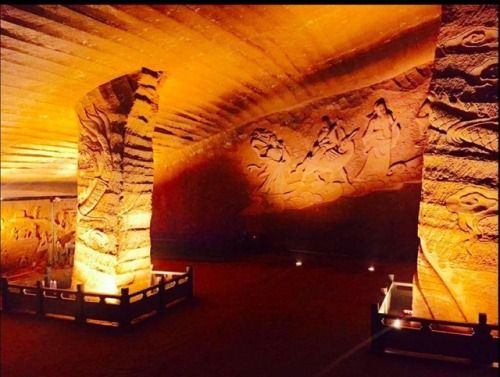

In 1992, a man named Wu Anai, near a Chinese village in Longyou County, based on a hunch, began to pump water out of a pond in his village. Anai believed the pond was not natural, nor was it infinitely deep as the local lore went, and he decided to prove it. He convinced some of his villagers and together they bought a water pump and began to siphon water out of the pond. After 17 days of pumping, the water level fell enough to reveal the flooded entrance to an ancient, man-made cave!
The cave has twenty-four rooms. There are pillars, staircases, and high ceilings over 30 meters (98 ft!) up. The work was done by humans, we know, because they left visible chisel marks in uniform bands of parallel groves. With over 30,000 square meters of space, all meticulously chiseled, this would have been a huge undertaking. Even if people were simply enlarging caves which already existed, it would still have required a lot of manpower working in a coordinated system for a long period of time.
Since the project would have been so large, it seems amazing that no record of it exists in China’s extensive written history. But there is not a word. Based on the cave alone, it is estimated to have been completed around 200 BCE, near the Qin Dynasty or Han Dynasties.


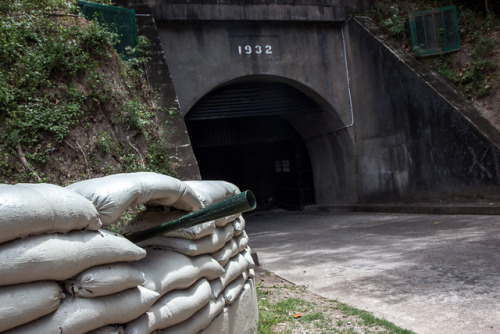
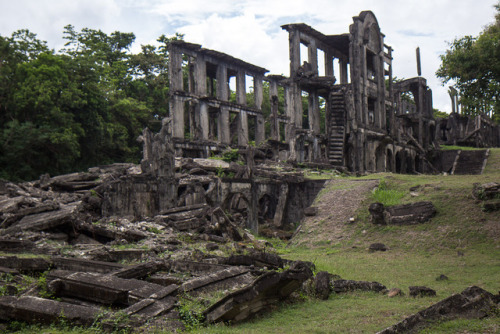
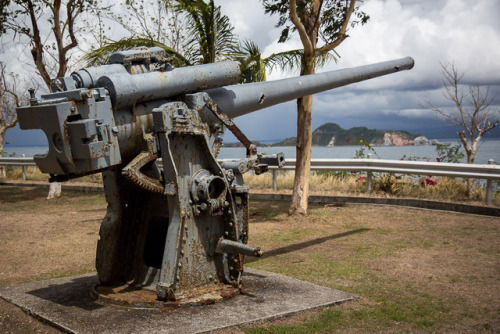
Corregidor Island, a small island at the entrance to Manila Bay. It is an important strategic point – whoever controls the island, controls Manila. And with it the Philippines. Since the Spanish first built a base on the island in 1570, Corregidor has been captured, and held, by the Dutch, the British, the Americans, the Japanese, and the Americans again.
It was taken in May 1942 by Japanese forces after months of near-constant bombardment. Corregidor marked the fall of the Philippines to the Japanese Empire. When American forces retook Corregidor in February 1945, it was another marker of the long, slow, and inexorable island-hopping campaign to push the Japanese back into Japan. That 1945 battle was the last action that Corregidor saw.
Today, it is an open-air museum. All across Corregidor are the ruins of the World War II military base, with bomb-ravaged buildings left as they were and many large guns still in place.
Book Lovers Day - Free Aeronautics e-Books from NASA

Quieting the Boom

The Shaped Sonic Boom Demonstrator and the Quest for Quiet Supersonic Flight.
Download it HERE
Elegance in Flight

A comprehensive History of the F-16XL Experimental Prototype and its Role in our Flight Research.
Download it HERE
Probing the Sky

Selected National Advisory Committee for Aeronautics (NACA) Research Airplanes and Their Contributions to Flight.
Download it HERE
Cave of the Winds

The huge Langley Full-Scale Tunnel building dominated the skyline of Langley Air Force Base for 81 years (1930–2011). Explore how the results of critical tests conducted within its massive test section contributed to many of the Nation’s most important aeronautics and space programs.
Download it HERE
A New Twist in Flight Research

A New Twist in Flight Research describes the origins and design development of aeroelastic wing technology, its application to research aircraft, the flight-test program, and follow-on research and future applications.
Download it HERE
Sweeping Forward

Developing & Flight Testing the Grumman X-29A Forward Swept Wing Research Aircraft.
Download it HERE
Thinking Obliquely

Robert T. Jones, the Oblique Wing, our AD-1 Demonstrator, and its Legacy.
Download it HERE
The Apollo of Aeronautics

The fuel crisis of the 1970s threatened not only the airline industry but also the future of American prosperity itself. It also served as the genesis of technological ingenuity and innovation from a group of scientists and engineers at NASA, who initiated planning exercises to explore new fuel-saving technologies.
Download it HERE
X-15: Extending the Frontiers of Flight

X-15: Extending the Frontiers of Flight describes the genesis of the program, the design and construction of the aircraft, years of research flights and the experiments that flew aboard them.
Download it HERE
Ikhana

Delve into the story of the Ikhana, a remotely piloted vehicle used by NASA researchers to conduct Earth science research, which became an unexpected flying and imaging helper to emergency workers battling California wildfires.
Download it HERE
NASA’s Contributions to Aeronautics, Volume 1

This first volume in a two-volume set includes case studies and essays on NACA-NASA research for contributions such as high-speed wing design, the area rule, rotary-wing aerodynamics research, sonic boom mitigation, hypersonic design, computational fluid dynamics, electronic flight control and environmentally friendly aircraft technology.
Download it HERE
NASA’s Contributions to Aeronautics, Volume 2

Continue your journey into the world of NASA’s Contributions to Aeronautics with case studies and essays on NACA-NASA research for contributions including wind shear and lightning research, flight operations, human factors, wind tunnels, composite structures, general aviation aircraft safety, supersonic cruise aircraft research and atmospheric icing.
Download it HERE
Interested in other free e-books on topics from space, science, research and more? Discover the other e-books HERE.
Make sure to follow us on Tumblr for your regular dose of space: http://nasa.tumblr.com

The late effects of stress: New insights into how the brain responds to trauma
Mrs. M would never forget that day. She was walking along a busy road next to the vegetable market when two goons zipped past on a bike. One man’s hand shot out and grabbed the chain around her neck. The next instant, she had stumbled to her knees, and was dragged along in the wake of the bike. Thankfully, the chain snapped, and she got away with a mildly bruised neck. Though dazed by the incident, Mrs. M was fine until a week after the incident.
Then, the nightmares began.
She would struggle and yell and fight in her sleep every night with phantom chain snatchers. Every bout left her charged with anger and often left her depressed. The episodes continued for several months until they finally stopped. How could a single stressful event have such extended consequences?
A new study by Indian scientists has gained insights into how a single instance of severe stress can lead to delayed and long-term psychological trauma. The work pinpoints key molecular and physiological processes that could be driving changes in brain architecture.
The team, led by Sumantra Chattarji from the National Centre for Biological Sciences (NCBS) and the Institute for Stem Cell Biology and Regenerative Medicine (inStem), Bangalore, have shown that a single stressful incident can lead to increased electrical activity in a brain region known as the amygdala. This activity sets in late, occurring ten days after a single stressful episode, and is dependent on a molecule known as the N-Methyl-D-Aspartate Receptor (NMDA-R), an ion channel protein on nerve cells known to be crucial for memory functions.
The amygdala is a small, almond-shaped groups of nerve cells that is located deep within the temporal lobe of the brain. This region of the brain is known to play key roles in emotional reactions, memory and making decisions. Changes in the amygdala are linked to the development of Post-Traumatic Stress Disorder (PTSD), a mental condition that develops in a delayed fashion after a harrowing experience.
Previously, Chattarji’s group had shown that a single instance of acute stress had no immediate effects on the amygdala of rats. But ten days later, these animals began to show increased anxiety, and delayed changes in the architecture of their brains, especially the amygdala.
“We showed that our study system is applicable to PTSD. This delayed effect after a single episode of stress was reminiscent of what happens in PTSD patients,” says Chattarji. “We know that the amygdala is hyperactive in PTSD patients. But no one knows as of now, what is going on in there,” he adds.
Investigations revealed major changes in the microscopic structure of the nerve cells in the amygdala. Stress seems to have caused the formation of new nerve connections called synapses in this region of the brain. However, until now, the physiological effects of these new connections were unknown.
In their recent study, Chattarji’s team has established that the new nerve connections in the amygdala lead to heightened electrical activity in this region of the brain.
“Most studies on stress are done on a chronic stress paradigm with repeated stress, or with a single stress episode where changes are looked at immediately afterwards – like a day after the stress,” says Farhana Yasmin, one of the Chattarji’s students. “So, our work is unique in that we show a reaction to a single instance of stress, but at a delayed time point,” she adds.
Furthermore, a well-known protein involved in memory and learning, called NMDA-R has been recognised as one of the agents that bring about these changes. Blocking the NMDA-R during the stressful period not only stopped the formation of new synapses, it also blocked the increase in electrical activity at these synapses.
“So we have for the first time, a molecular mechanism that shows what is required for the culmination of events ten days after a single stress,” says Chattarji. “In this study, we have blocked the NMDA Receptor during stress. But we would like to know if blocking the molecule after stress can also block the delayed effects of the stress. And if so, how long after the stress can we block the receptor to define a window for therapy,” he adds.
Chattarji’s group first began their investigations into how stress affects the amygdala and other regions of the brain around ten years ago. The work has required the team to employ an array of highly specialised and diverse procedures that range from observing behaviour to recording electrical signals from single brain cells and using an assortment of microscopy techniques. “To do this, we have needed to use a variety of techniques, for which we required collaborations with people who have expertise in such techniques,” says Chattarji. “And the glue for such collaborations especially in terms of training is vital. We are very grateful to the Wadhwani Foundation that supports our collaborative efforts and to the DBT and DAE for funding this work,” he adds.

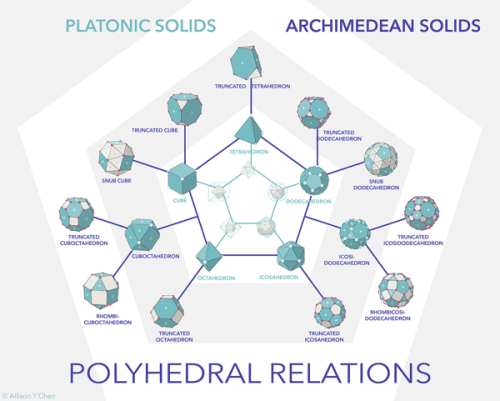
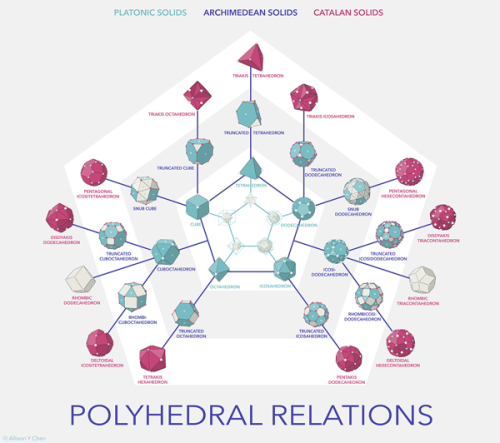
Platonic solid: In Euclidean geometry, a Platonic solid is a regular, convex polyhedron with congruent faces of regular polygons and the same number of faces meeting at each vertex. Five solids meet those criteria, and each is named after its number of faces.
An Archimedean solid is a highly symmetric, semi-regular convex polyhedron composed of two or more types of regular polygons meeting in identical vertices . They are distinct from the Platonic soilds, which are composed of only one type of polygon meeting in identical vertices, and from the Johnson solids, whose regular polygonal faces do not meet in identical vertices.
In mathematics, a Catalan solid, or Archimedean dual, is a dual polyhedron to an Archimedean soild. The Catalan solids are named for the Belgian mathematician, Eugène Catalan, who first described them in 1865.
The Catalan solids are all convex. They are face-transitive but not vertex-transitive. This is because the dual Archimedean solids are vertex-transitive and not face-transitive. Note that unlike Platonic soilds and Archimedean soild, the faces of Catalan solids are not regular polygons. However, the vertex figures of Catalan solids are regular, and they have constant dihedral angles. Additionally, two of the Catalan solids are edge-transitive: the rhombic dodecahedron and the rhombic triacontahedron. These are the duals of the two quasi-regular Archimedean solids.
Images: Polyhedral Relations by Allison Chen on Behance.
-
 celestialpabulum liked this · 9 years ago
celestialpabulum liked this · 9 years ago -
 terribadass reblogged this · 9 years ago
terribadass reblogged this · 9 years ago -
 terribadass liked this · 9 years ago
terribadass liked this · 9 years ago -
 xivv reblogged this · 9 years ago
xivv reblogged this · 9 years ago -
 researchstoragebmez liked this · 9 years ago
researchstoragebmez liked this · 9 years ago -
 overflowcafe liked this · 9 years ago
overflowcafe liked this · 9 years ago -
 warsawmouse reblogged this · 9 years ago
warsawmouse reblogged this · 9 years ago -
 capturingthecountryside liked this · 9 years ago
capturingthecountryside liked this · 9 years ago -
 gaybound70 liked this · 9 years ago
gaybound70 liked this · 9 years ago -
 legal-muse liked this · 9 years ago
legal-muse liked this · 9 years ago -
 philosophical-amoeba reblogged this · 9 years ago
philosophical-amoeba reblogged this · 9 years ago -
 lillaology liked this · 9 years ago
lillaology liked this · 9 years ago -
 cmoore21033 liked this · 9 years ago
cmoore21033 liked this · 9 years ago -
 unavidamoderna liked this · 9 years ago
unavidamoderna liked this · 9 years ago -
 thegirlgetsgod reblogged this · 9 years ago
thegirlgetsgod reblogged this · 9 years ago -
 channadaal reblogged this · 9 years ago
channadaal reblogged this · 9 years ago -
 channadaal liked this · 9 years ago
channadaal liked this · 9 years ago -
 dorkery reblogged this · 9 years ago
dorkery reblogged this · 9 years ago -
 sassuhfrasscass liked this · 9 years ago
sassuhfrasscass liked this · 9 years ago -
 litteratured reblogged this · 9 years ago
litteratured reblogged this · 9 years ago -
 wagesoffear liked this · 9 years ago
wagesoffear liked this · 9 years ago -
 nolongeronthisplace liked this · 9 years ago
nolongeronthisplace liked this · 9 years ago -
 half-moonfern liked this · 9 years ago
half-moonfern liked this · 9 years ago -
 myfirsthomelandshavebeenbooks liked this · 9 years ago
myfirsthomelandshavebeenbooks liked this · 9 years ago -
 michiau liked this · 9 years ago
michiau liked this · 9 years ago -
 iceman55 liked this · 9 years ago
iceman55 liked this · 9 years ago -
 lcrumithancock reblogged this · 9 years ago
lcrumithancock reblogged this · 9 years ago -
 devilsrejected1 reblogged this · 9 years ago
devilsrejected1 reblogged this · 9 years ago -
 excluson liked this · 9 years ago
excluson liked this · 9 years ago -
 thatswhyilovelife liked this · 9 years ago
thatswhyilovelife liked this · 9 years ago -
 drewsterparty liked this · 9 years ago
drewsterparty liked this · 9 years ago -
 lycrabondmx liked this · 9 years ago
lycrabondmx liked this · 9 years ago -
 moiracolleenodell reblogged this · 9 years ago
moiracolleenodell reblogged this · 9 years ago -
 moiracolleenodell liked this · 9 years ago
moiracolleenodell liked this · 9 years ago -
 airsoldan liked this · 9 years ago
airsoldan liked this · 9 years ago -
 morbidfinwe liked this · 9 years ago
morbidfinwe liked this · 9 years ago
A reblog of nerdy and quirky stuff that pique my interest.
291 posts